The One Place You Must Visit in Saint-Rémy-de-Provence
7 min readSaint-Rémy-de-Provence is a small commune in Southern France’s Provence region. Like most Provençal villages, it’s known for its beautiful buildings, markets days and small town charm. But Saint-Rémy-de-Provence has a...
The post The One Place You Must Visit in Saint-Rémy-de-Provence appeared first on Teaspoon of Adventure.
Saint-Rémy-de-Provence is a small commune in Southern France’s Provence region. Like most Provençal villages, it’s known for its beautiful buildings, markets days and small town charm.
But Saint-Rémy-de-Provence has a few big claims to fame:
- 16th Century author/future seer Nostradamus was born in Saint Rémy.
- Vincent Van Gogh spent a year living in an asylum/monastery in Saint-Rémy-de-Provence where he painted many landscapes, including Starry Night.
- Glanum, an ancient site going back to the 6th Century BC, sits on the outskirts of town.
So which of these famous facts makes Saint-Rémy-de-Provence so worth visiting?
Below I’ll tell you all about our time in town and the one place you absolutely must add to your South of France itinerary!
No, it’s not Van Gogh’s Monastery
Since Saint-Rémy-de-Provence is known for its Van Gogh connection, you may assume the one place you have to visit in town would be the monastery where Van Gogh stayed and created some of his most well known paintings.
But you would be wrong…
Colin and I visited Monastery Saint Paul de Mausole, an 11th Century former monastery and asylum where Van Gogh checked himself in and painted famous works such as Starry Night, during our time in Saint-Rémy.
Our visit started out quite pleasant. To get to the main building, there’s a long walk down a garden path. Along the hedges are Van Gogh prints and little information boards set up to show how the setting inspired Van Gogh’s work.

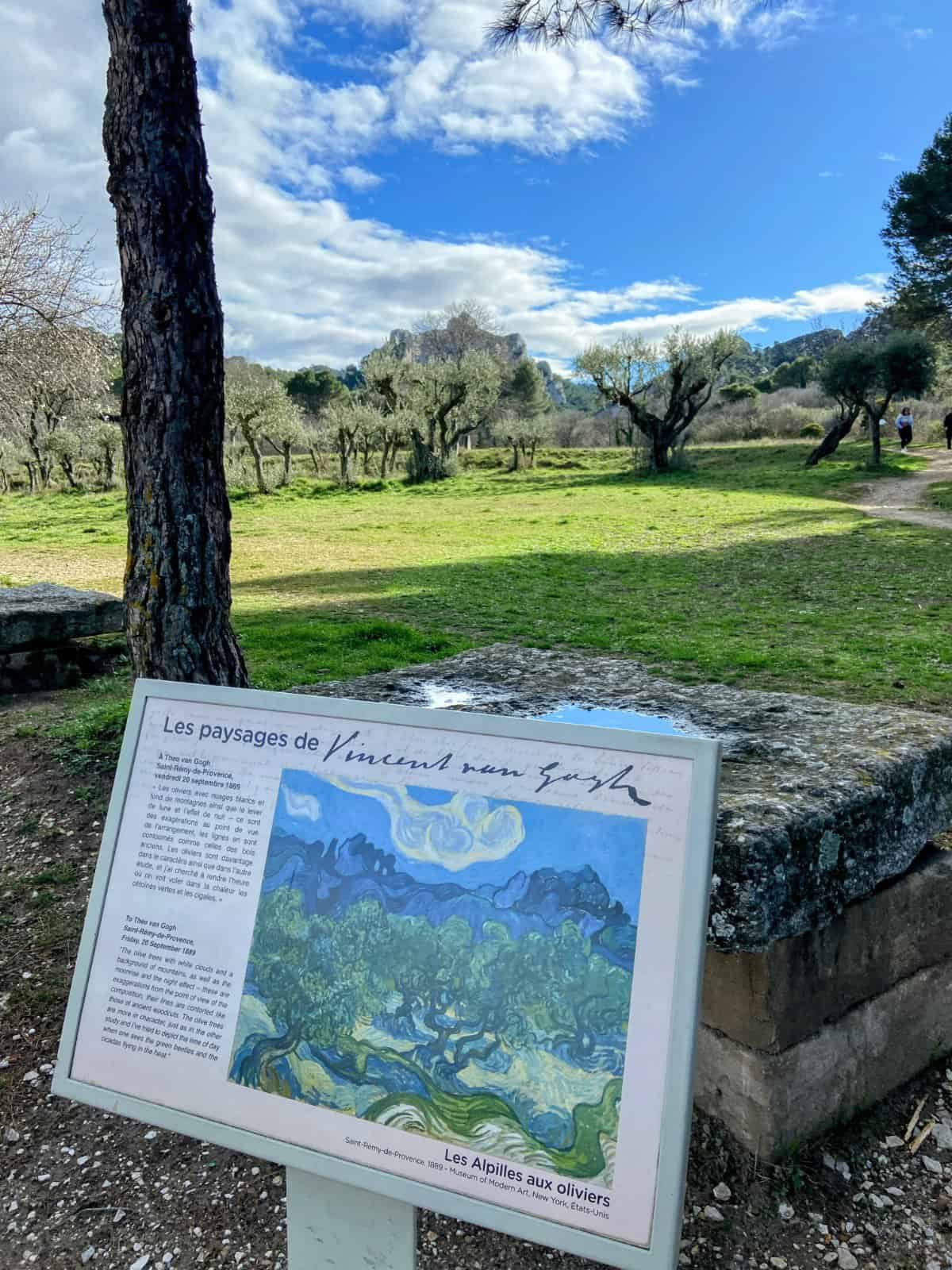
I loved being able to look out into a field and still see the same trees and mountains that were visible in Van Gogh’s painting. Talk about bringing art to life!
There was also a very cool metal statue of Van Gogh holding sunflowers and a beautiful cloistered courtyard. Keep in mind, we saw all of this before we bought our tickets and entered the actual building.
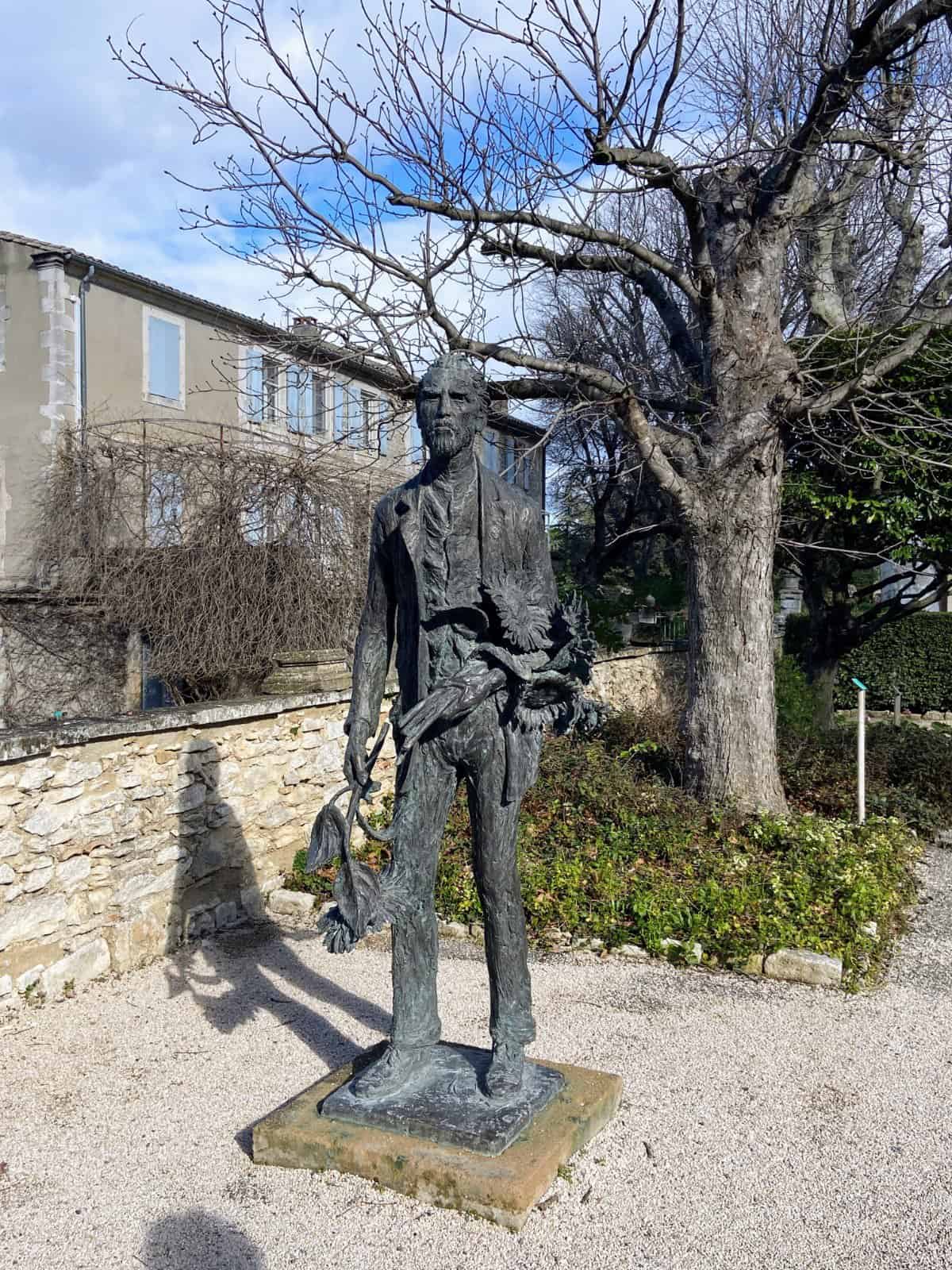
Once in the building, we bought our tickets from the gift shop and were instructed to go upstairs to see the room where Van Gogh stayed. And this is where the let down began.
The room itself was tiny. And I believe I read that the furniture placed there wasn’t an accurate depiction of what his room would have looked like at the time – instead it was a recreation of one of his paintings.
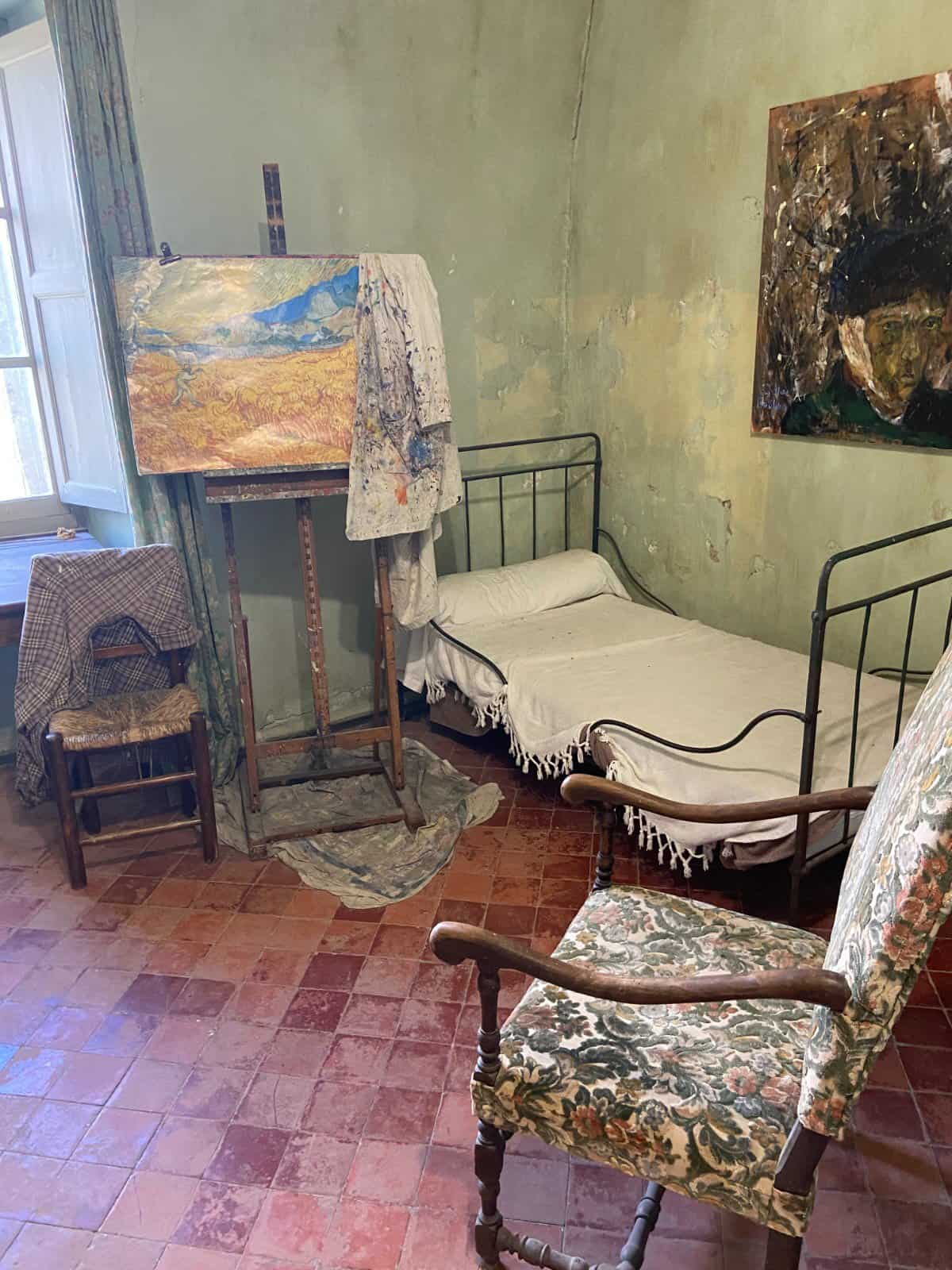
The walls of this very tiny upper floor were covered in information. You’d think that would be a good thing but instead of museum-quality signage and artifacts, it looked like someone had just printed out a bunch of 12 point font book reports and taped them to the walls.
The stairway leading to Van Gogh’s room was, apparently, an art gallery. But I think there are much more impressive French art galleries elsewhere in the country.
The only other thing to see was the back garden, which was also quite small. And, it being February, of course the lavender was not in bloom.
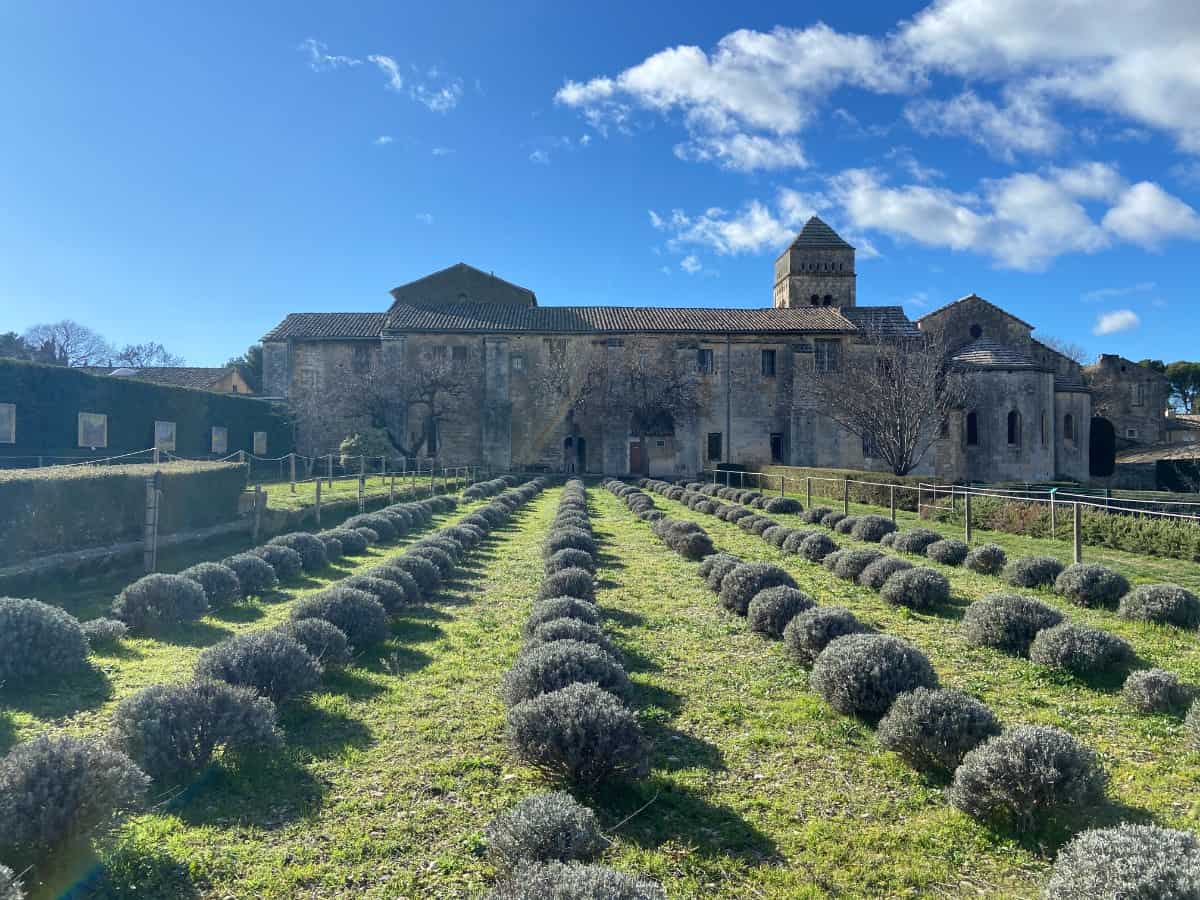
Overall, we were pretty disappointed by our visit to Van Gogh’s monastery in Saint-Rémy-de-Provence. Truly the best parts – the outdoor prints, statue and cloisters – we got to see before we paid.
While entrance was only €8 each, for us it was a waste of money. I would have rather walked down to the gift shop and then walked right back.
Note: We visited in February, so the monastery was pretty quiet. Tickets were being sold in the gift shop, meaning you could enjoy some of the outer areas before you had to pay.
I saw a ticket booth stationed at the front gate so I would imagine in the summer, you may have to pay before you get to walk down the nice path. I would also imagine the tiny upstairs area and small garden get very crowded, making them even less enjoyable.
Luckily, our time in St. Remy wasn’t a total waste!
The best thing to do in Saint-Rémy-de-Provence? Visit Glanum
After being disappointed at Van Gogh’s monastery, we headed next door to Glanum where our luck turned around.
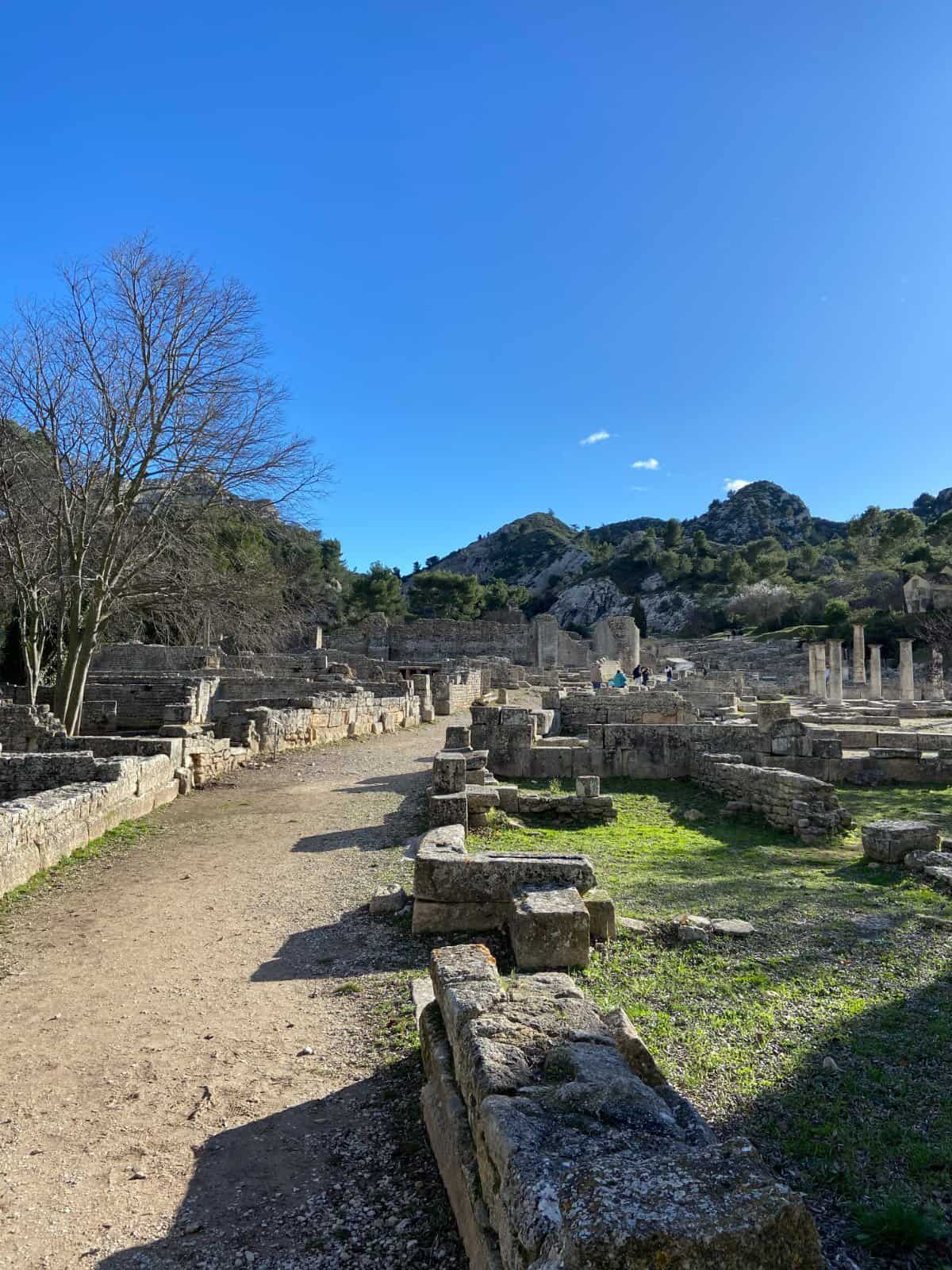
The history of Glanum
Glanum is an ancient ruin site that was first settled in the 6th Century BC thanks to its strategic position next to the Alpilles mountain range and the presence of a sacred water spring.
Greek influences were seen in the architecture of the site starting in the 2nd Century BC and it was eventually taken over by the Romans around 125 BC. Glanum continued to expand under Roman rule until the city was destroyed and slowly abandoned in 270 AD.
Eventually, the Roman city became covered in a layer of sand, clay and dirt, thick enough for an olive grove to grow on top. The same olive grove that Van Gogh painted pictures of from the asylum next door!
It wasn’t until 1921 that the site was rediscovered and excavations could begin. And now it’s a very cool archeological ode to the area’s history, ready for us 21st Century folk to discover.
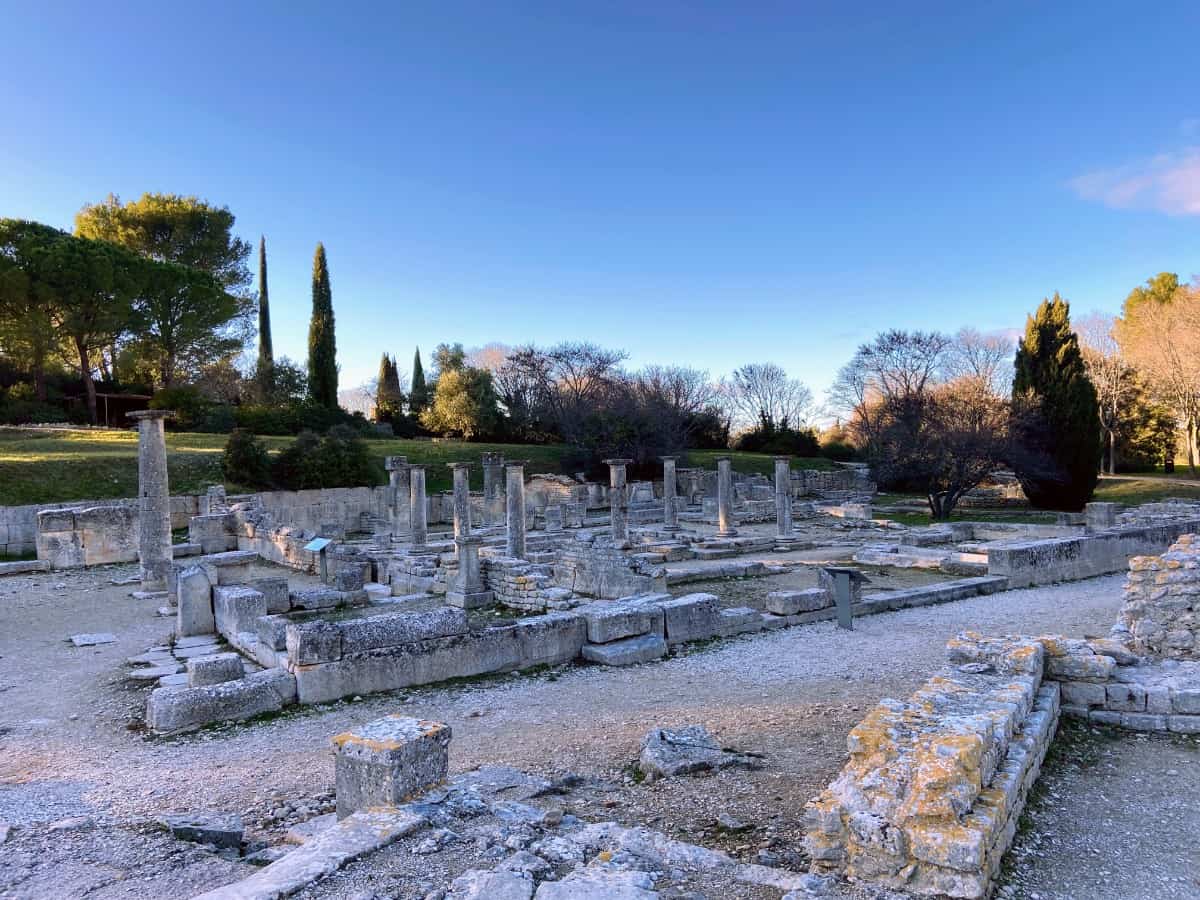
Visiting Glanum today
Colin and I picked up our audioguides from the visitor centre/gift shop and started our stroll down the once busy streets of Glanum.
PS: There are also plaques with English and an English pamphlet you can grab if you don’t want to pay extra for the audioguide.
The audioguide led us through the entire site, taking us from Gallic to Greek to Roman times. While most of the place is in ruins, you could still make out areas that once were temples, homes, shops and theatres.
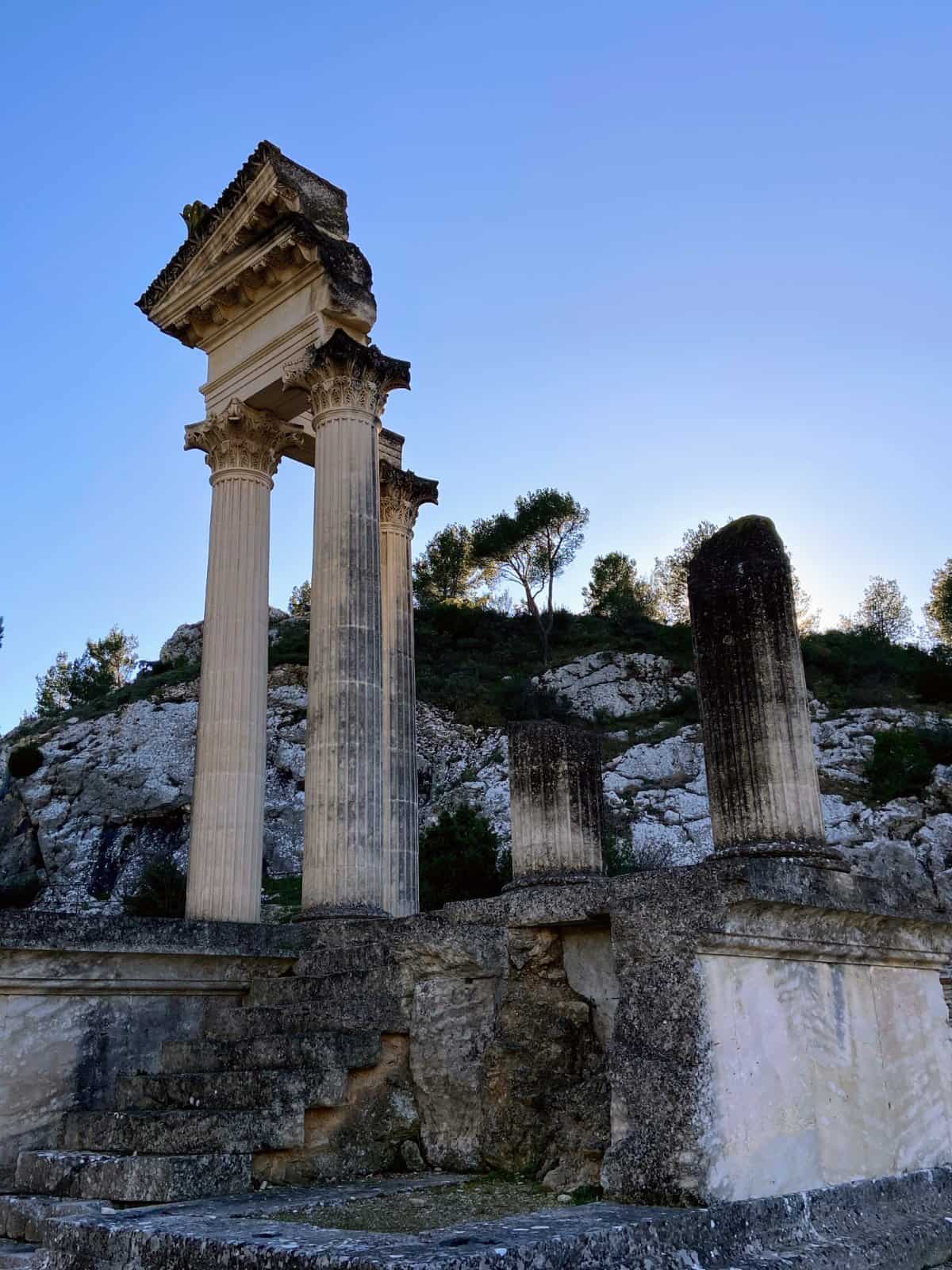
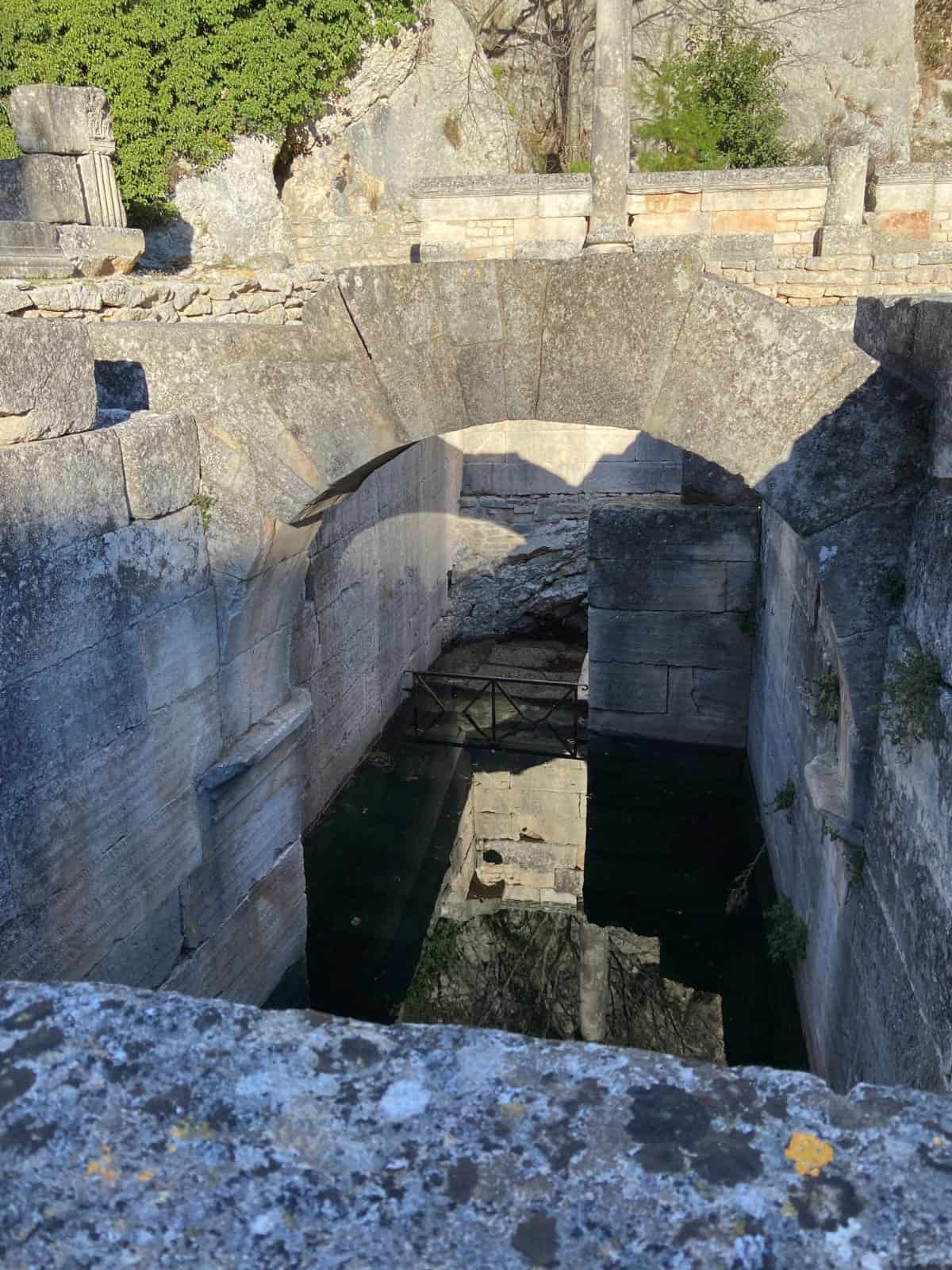
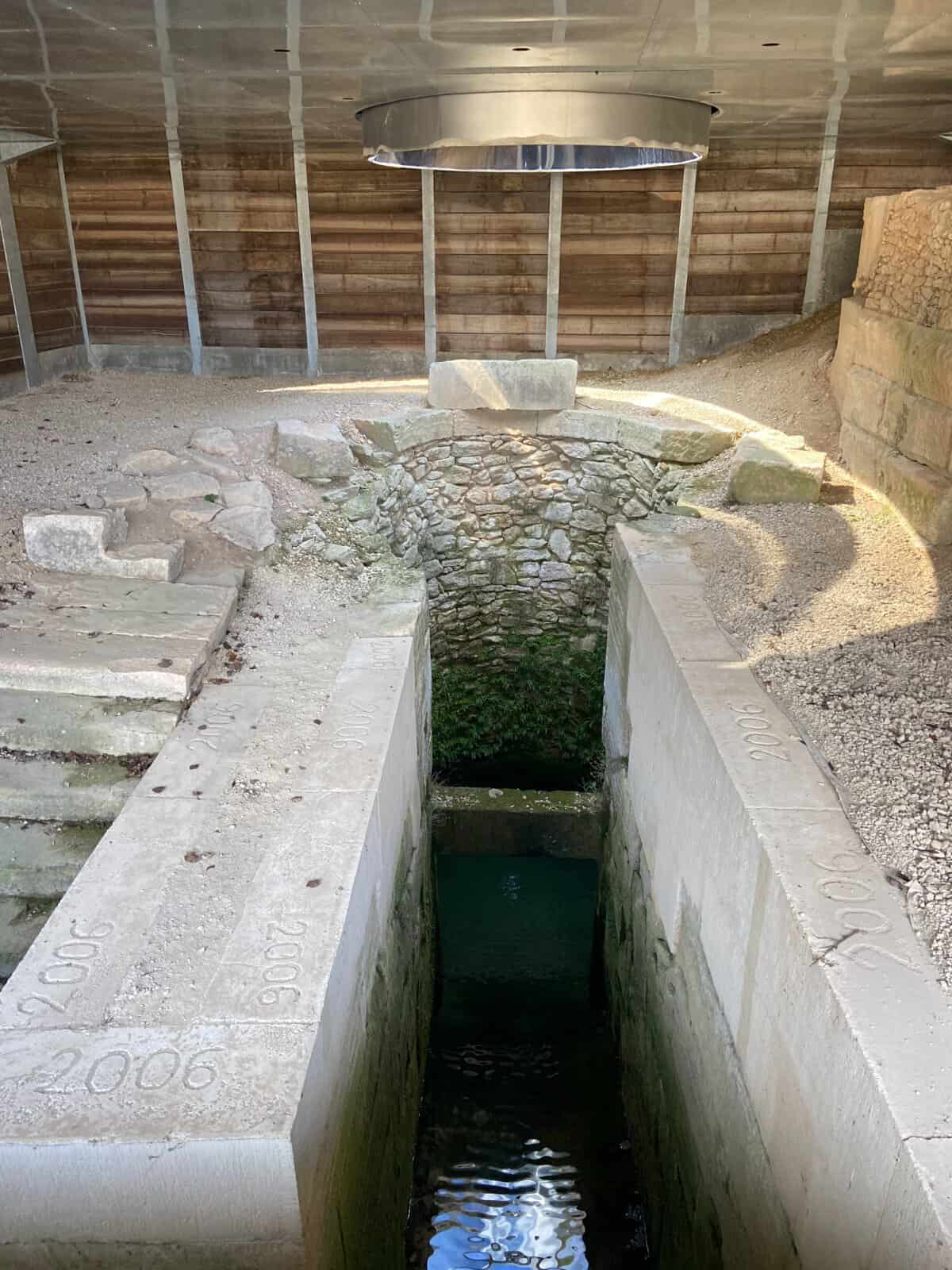
There was the huge well belonging to the sacred spring – for which Glanum was named after – as well as frescoes still visible on the walls. Most of the site is original, but one small temple section was recreated in 1992.
After walking through the entire site, which was way larger than we thought it would be, our audioguide encouraged us to head up the hill for a view over Glanum. It was a beautiful view and gave us a great perspective on the ancient city.
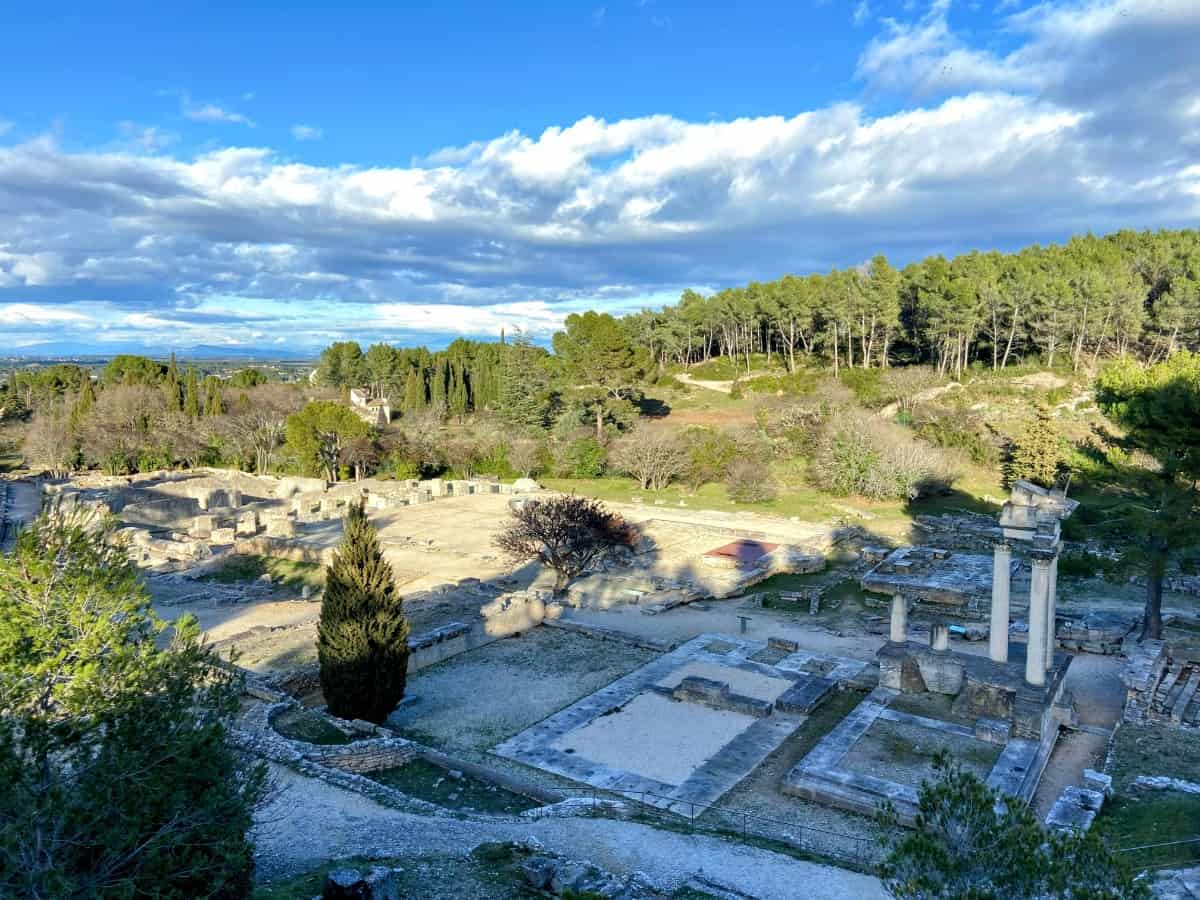
Bonus: Two of Glanum’s best preserved monuments have been moved across the street where you can discover them for free. The mausoleum and arch are very impressive – they’re also right next to the parking lot where you’ll park before your visit.
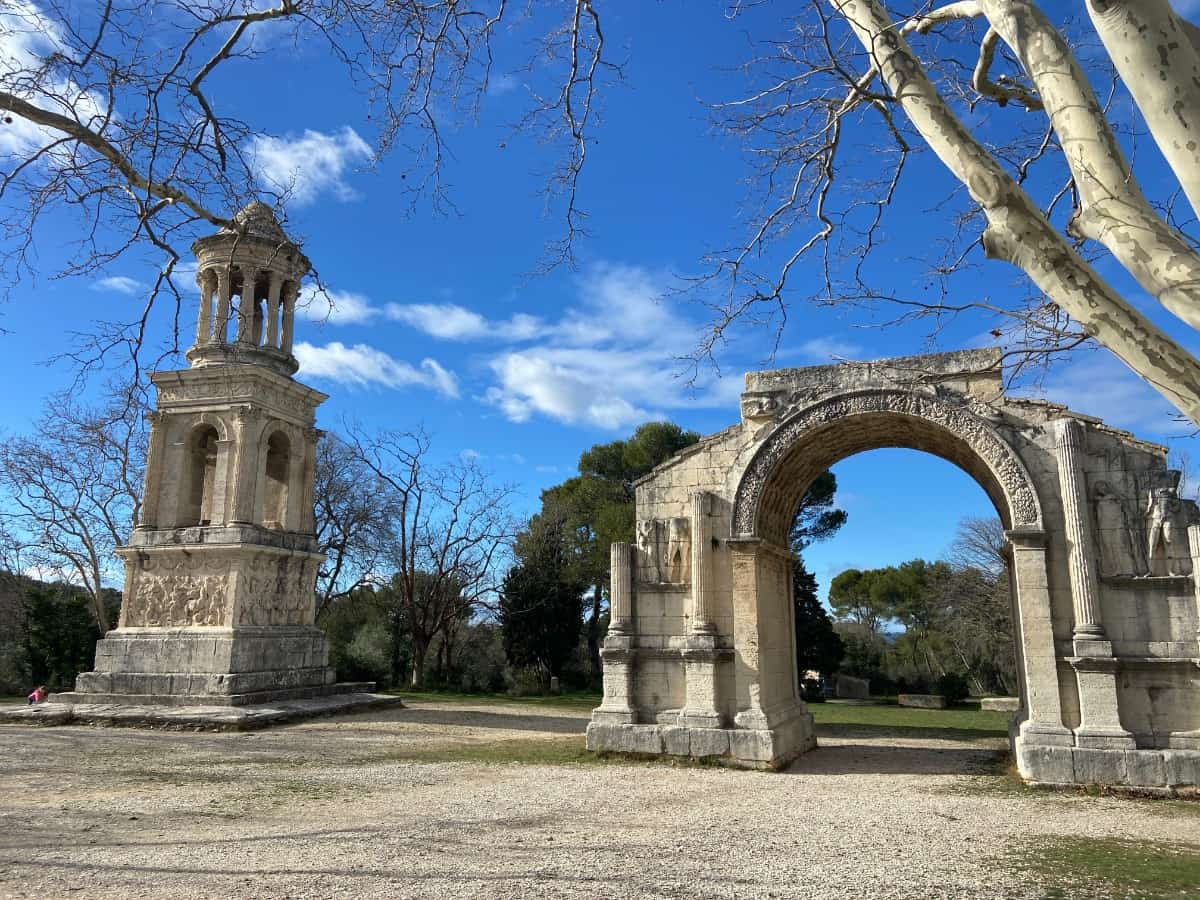
Overall, I loved visiting Glanum. It was such a nice change after our disappointment at the monastery. We stayed way longer than we thought we would, learned a ton and were really blown away by the ancient cities that once existed here.
After seeing Roman sites in Arles, Nimes and Orange, you’d think we’d be over the Roman part of our Provence itinerary. But not at all. Glanum is so unique and its history goes way back beyond Roman times. I think it’s very much worth the visit.
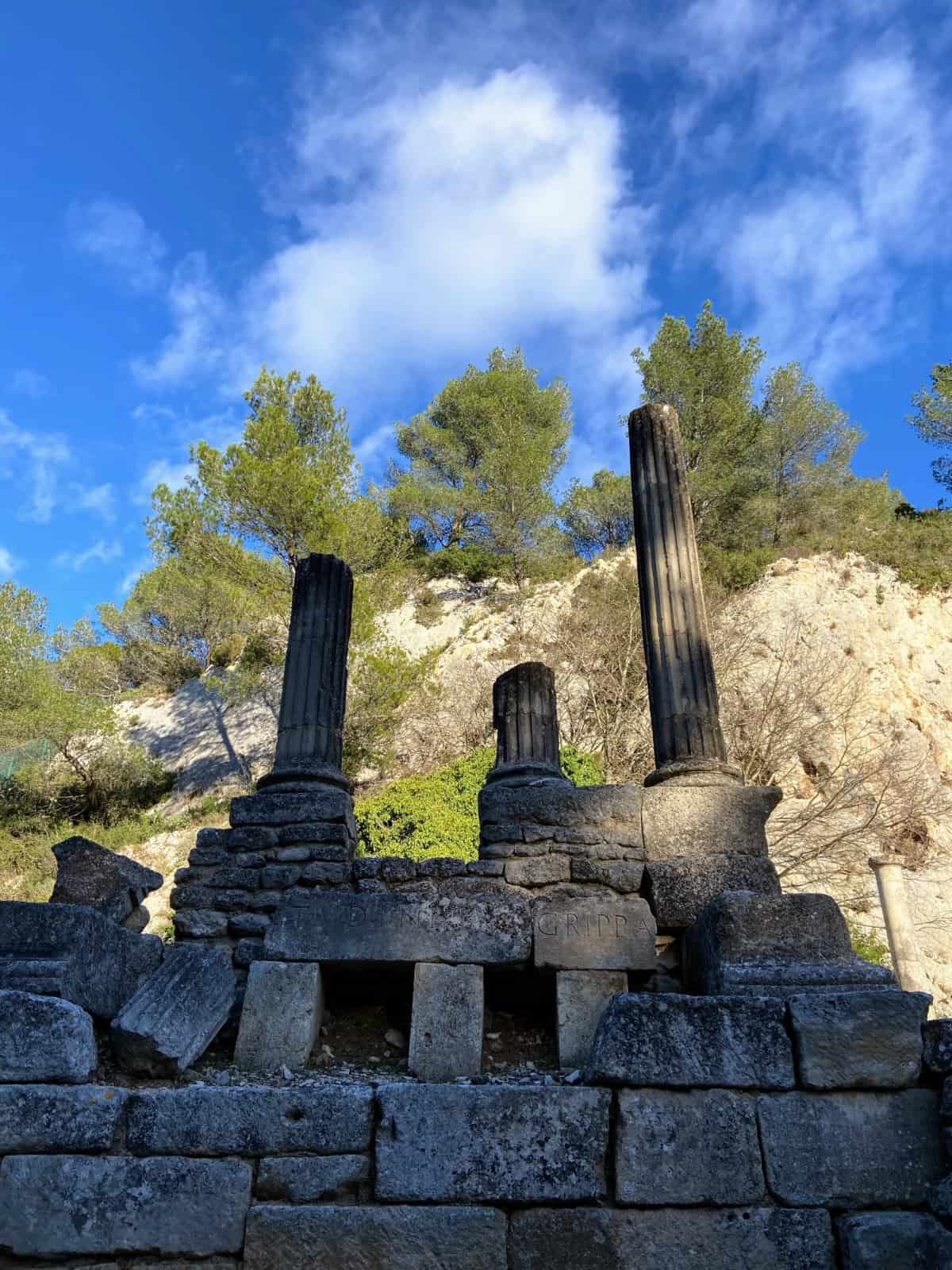
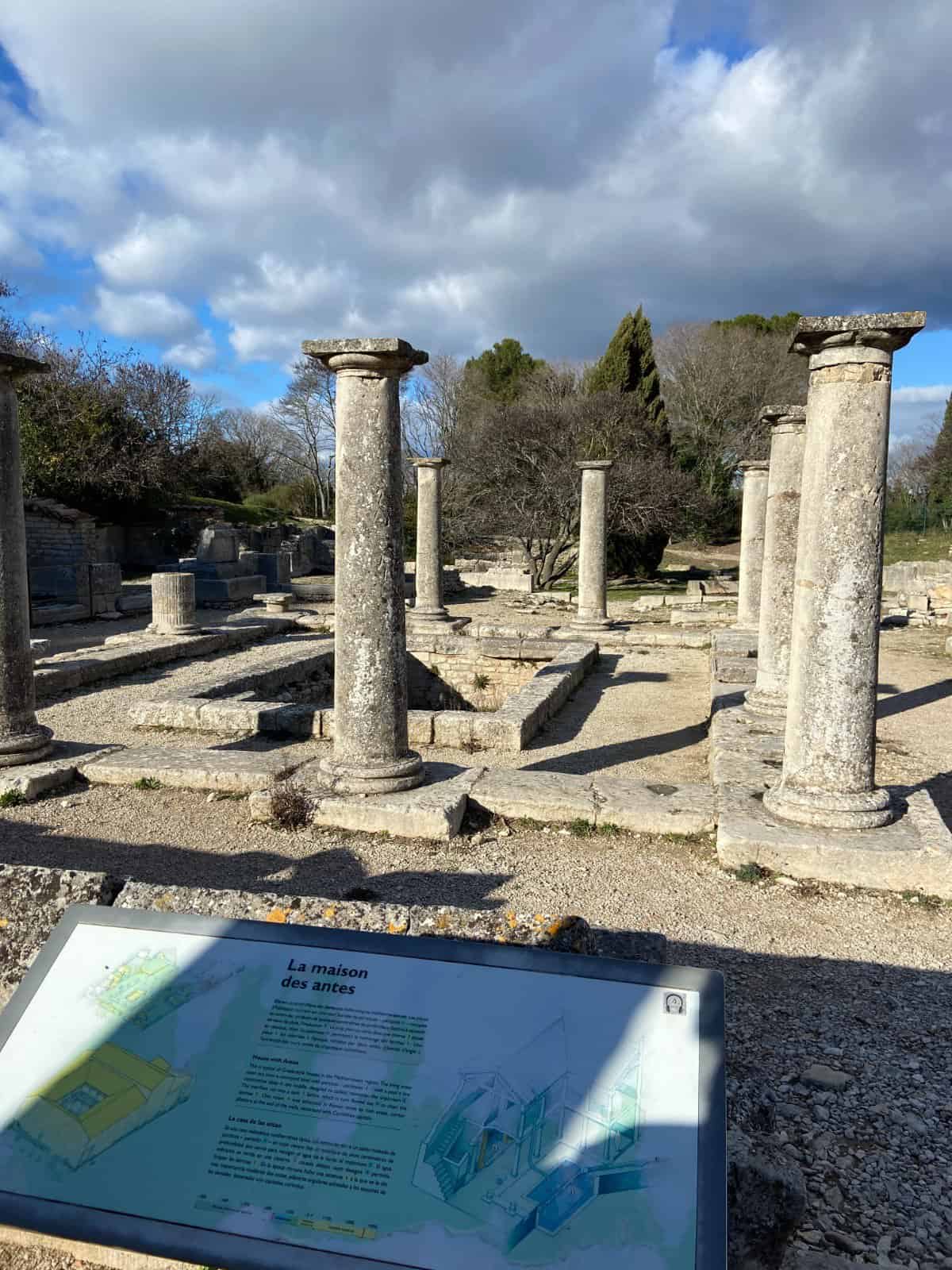
Other things to do in Saint-Rémy
Of course, Saint-Rémy-de-Provence is more than just Van Gogh’s monastery and Glanum. You can spend the rest of your day in town:
- Visiting the Musee des Alpilles to learn about local folklore and Nostradamus’s prophecies
- Checking out the modern art and Van Gogh collections at The Estrine Museum
- Taking a photo outside of Nostradamus’s house (the inside is currently closed but there’s a plaque to read on the outside)
- Following a map around town to see recreations of Van Gogh’s paintings (inquire at the tourist info centre)
- Grabbing a sweet treat such as ice cream from Le Roma, famous chocolate from Joël Durand or candied fruits from Lilamand Confiseur
You could also head 15 minutes down the street from Saint Remy to Les Baux-de-Provence where you’ll find a multi-media art show at Carrières des Lumières, the medieval fortress of Château des Baux-de-Provence, and beautiful hilltop views.
Or drive 30 minutes north to Avignon where you can check out the impressive pope’s palace and a bridge to nowhere!
Wrapping up your visit to Glanum in Saint-Rémy-de-Provence
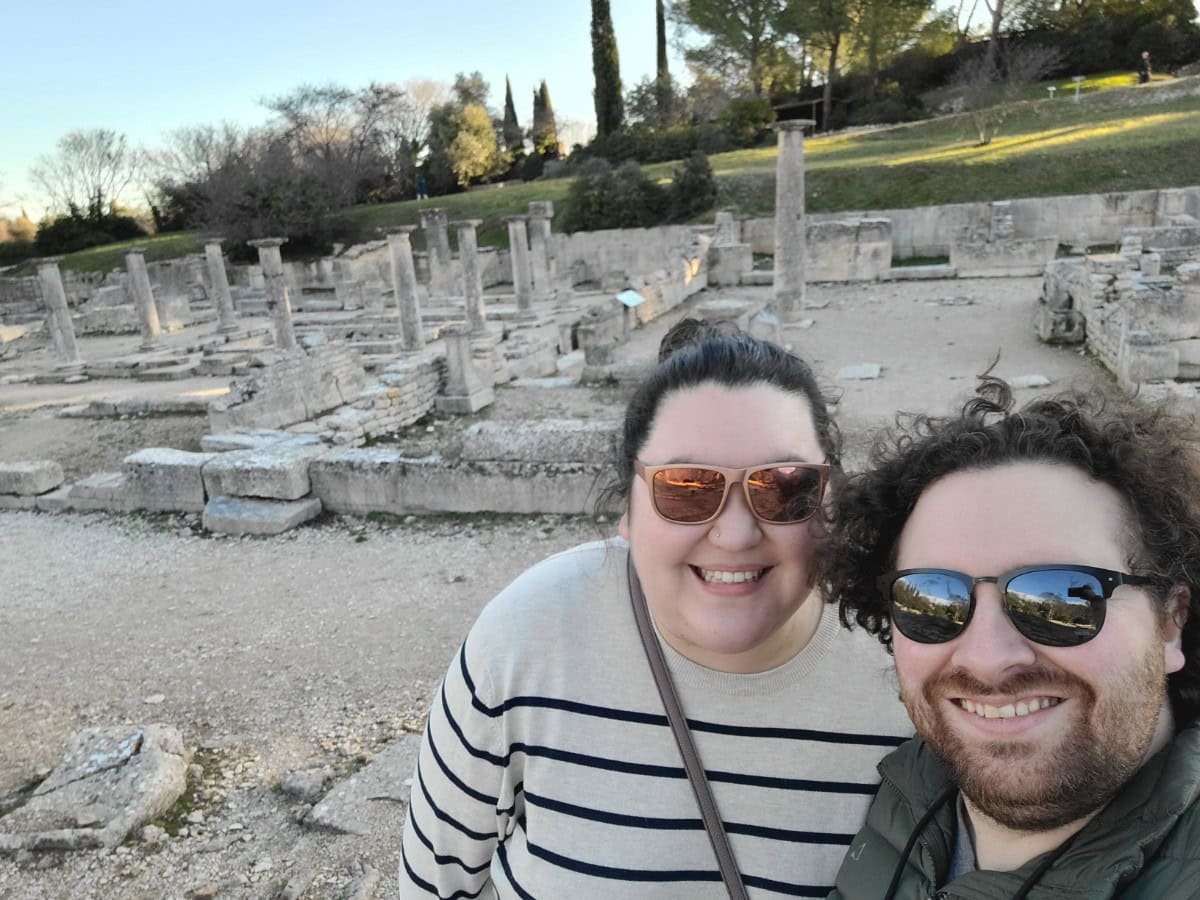
If you’re into history, ancient ruins and beautiful views, you’re going to want to check out Glanum in Saint-Rémy-de-Provence. I’m no history buff, but being able to walk around the site and have an audioguide in my ear really brought the place to life for me.
We saw people of all ages at Glanum. Kids loved running around what is essentially an ancient playground. And I even saw a few older people making their way slowly up the hill to take in the view.
For about the same price as it costs to visit Van Gogh’s monastery next door, I can guarantee you’ll have a way better time exploring Glanum. Don’t miss this ancient site in Saint-Rémy-de-Provence!



